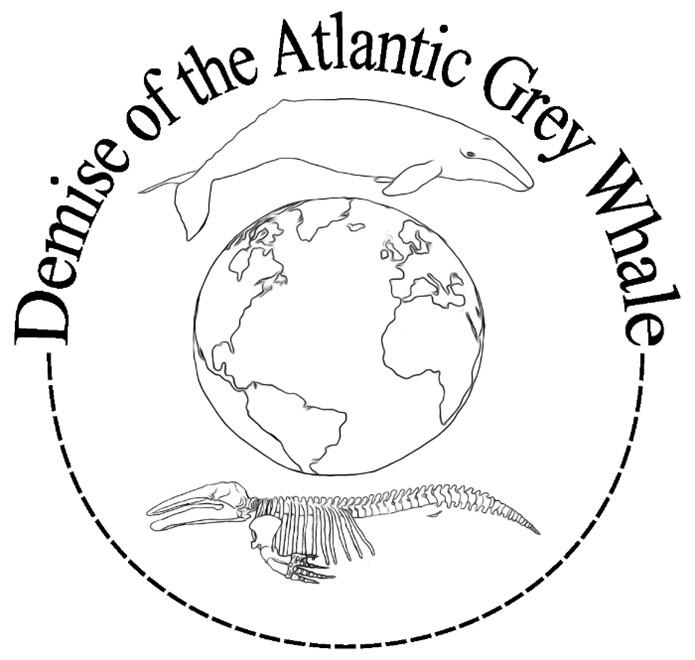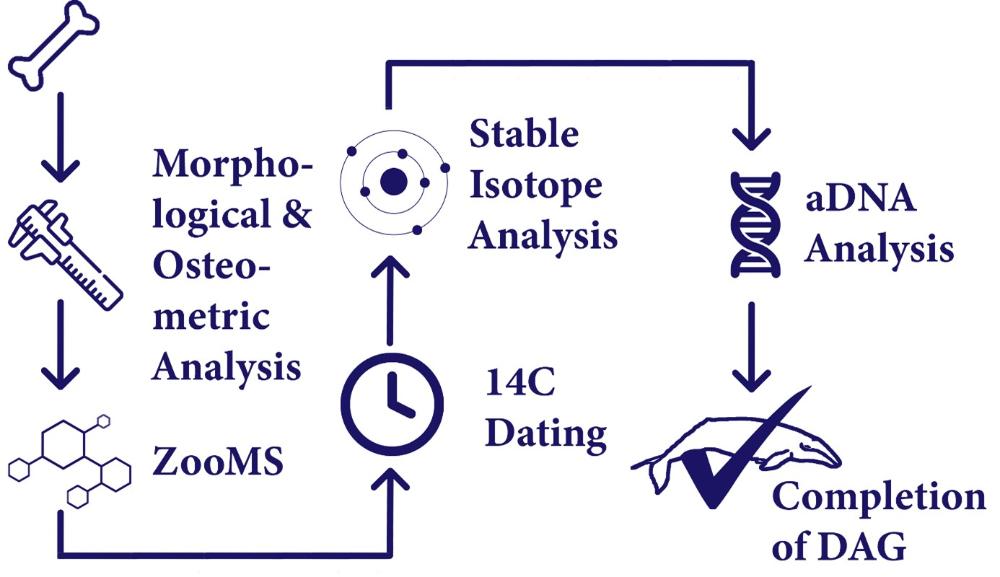Demise of the Atlantic Grey Whale
Demise of the Atlantic Grey Whale

The Demise of the Atlantic Grey whale (DAG) is a MSCA IF funded project awarded to Youri van den Hurk, with James Barrett as supervisor.
The grey whale (Eschrichtius robustus) is a baleen whale species currently confined to the North Pacific. Palaeontological and archaeological research has revealed that the species was also present in the North Atlantic, possibly up until the 17th/18th century CE. It is the aim of DAG to discover the past spatiotemporal range of the grey whale in the eastern Atlantic, whether active whaling was undertaken on the species, and whether anthropogenic pressure eventually led to its extirpation from the Atlantic Ocean.
In the past two decades, some grey whale individuals from the North Pacific have entered the North Atlantic again through the Northwest passage. These first individuals might signal a recolonization of the North Atlantic. However, to help predict the likely success of such a recolonization, it will be valuable to better understand what caused the initial extirpation of the grey whale from the North Atlantic. DAG intends to find an answer to this question and has the potential to inform conservation policies supporting the return of this iconic species.
DAG will apply a combination of interdisciplinary, step-by-step, methods. First is an assessment of historical sources that mention grey whales, to evaluate where and when humans interacted with the species in the past, and whether active whaling was conducted. Subsequently, a zooarchaeological assessment of cetacean bones present in the archaeological record of northern and western Europe will be conducted. Identification to the species level will be attempted wherever possible, based on morphological and osteometric analyses. However, since whale bones are hard to identify to the species level using these traditional zooarchaeological methods, subsequent biomolecular identification is also needed.
Based on the zooarchaeological assessment, sampling of whale bone will be undertaken on a subset covering a wide spatiotemporal range to assess which bones are indeed grey whale. This will be done using Zooarchaeology by Mass-Spectrometry during a secondment at the University of Cambridge, under the supervision of Matthew Collins. The grey whale samples will subsequently be analysed using additional biomolecular methods. Samples proving to be North Atlantic right whale (Eubalaena glacialis) or bowhead whale (Balaena mysticetus) will also be studied further, as part of the 4-OCEANS project, with which DAG is closely affiliated.
Subsequently, the identified grey whale specimens will be radiocarbon dated at The National Laboratory for Age Determination (NTNU). This work will provide an unprecedented overview of the spatiotemporal range of the grey whale in the eastern Atlantic. Stable Isotope Analysis will then be undertaken, also at the National Laboratory for Age Determination. By applying carbon, nitrogen, sulphur and hydrogen isotope analysis on the bones, the project will explore where the grey whales were foraging, whether their foraging grounds shifted through time, and what migration routes may have existed.
Lastly, DAG will apply aDNA analysis on a subset of the identified grey whale specimens. This research will be done at the GLOBE Institute, University of Copenhagen, under the supervision of Morten Tange Olsen. It will assess temporal demographic change in the extirpated grey whales of the Atlantic Ocean, - for example, when and how rapidly they declined, and thus potentially whether early whaling endeavours were likely to have played a role in the eventual demise of the population.

Contacts
Funding
DAG is funded by the Marie Skłodowska-Curie Actions Individual Fellowship project under the European Union’s Horizon 2020 research and innovation programme (Grant agreement No. 101025598).